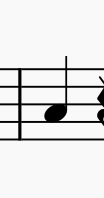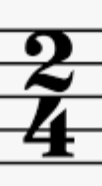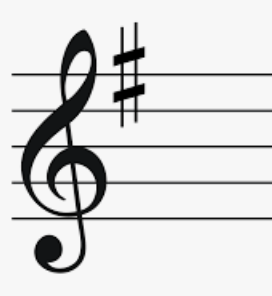Learn the Violin Online with Online Violin Teacher Meghan Faw Lesson 9/15: Note values, time signatures, & key signatures
This is the final bit of information you need to learn before playing the first 5 songs in the free beginner songbook!
Note values (or note durations) tell you how long to hold each note.
This is a quarter note. Quarter notes get one beat. The concept of beats can be hard to understand at first (I majorly struggled with it when I was a kid), but you can think of a beat like a clap or a click on the metronome.
Quarter note
This is a quarter rest. This means you rest or stop playing for one beat.
Quarter rest
This is a half note. Half notes get 2 beats.
Half note
This is a half rest. This means you rest or stop playing for 2 beats.
Half rest
This is a whole note. Whole notes get 4 beats.
Whole note
This is a whole rest. This means that you stop playing for 4 beats or an entire measure.
Whole rest
These are eighth notes. Two eighth note equals one quarter note, so each eighth note gets half a beat each.
Eighth notes
These are eighth rests, which mean you rest or stop playing for half a beat each.
Eighth rests
Time Signatures
Time signatures look like 2 numbers on top of each other. The top number tells you how many beats there are per measure, and the bottom number tells you what kind of note gets the beat.
In 4/4 (shown above), there are 4 beats per measure (top number) and the quarter note gets the beat (bottom number).
In 3/4 (shown above) there are 3 beats per measure and the quarter note gets the beat.
In 2/4 (shown above) there are 2 beats per measure and the quarter note gets the beat.
Key Signatures
Key signatures indicate what notes need to be sharp or flat throughout a piece.
A Major
Like we learned in the scales lesson, A Major has 3 sharps, F#, C#, and G#.
D Major
D Major has 2 sharps, F# and C#.
G Major
G Major has 1 sharp, F#.
You are now ready to play the first 5 songs in the free beginner songbook!














